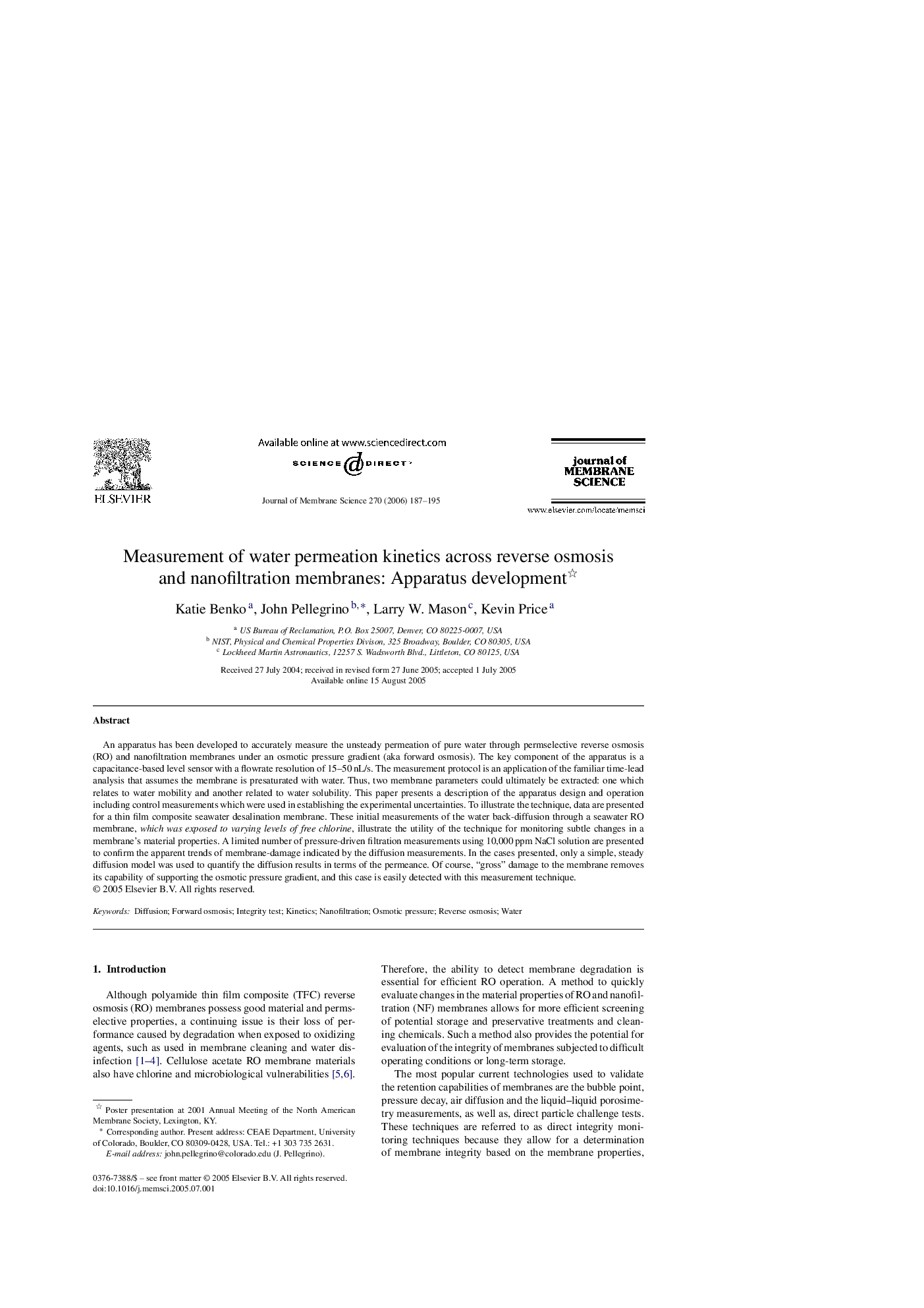| Article ID | Journal | Published Year | Pages | File Type |
|---|---|---|---|---|
| 639679 | Journal of Membrane Science | 2006 | 9 Pages |
An apparatus has been developed to accurately measure the unsteady permeation of pure water through permselective reverse osmosis (RO) and nanofiltration membranes under an osmotic pressure gradient (aka forward osmosis). The key component of the apparatus is a capacitance-based level sensor with a flowrate resolution of 15–50 nL/s. The measurement protocol is an application of the familiar time-lead analysis that assumes the membrane is presaturated with water. Thus, two membrane parameters could ultimately be extracted: one which relates to water mobility and another related to water solubility. This paper presents a description of the apparatus design and operation including control measurements which were used in establishing the experimental uncertainties. To illustrate the technique, data are presented for a thin film composite seawater desalination membrane. These initial measurements of the water back-diffusion through a seawater RO membrane, which was exposed to varying levels of free chlorine, illustrate the utility of the technique for monitoring subtle changes in a membrane's material properties. A limited number of pressure-driven filtration measurements using 10,000 ppm NaCl solution are presented to confirm the apparent trends of membrane-damage indicated by the diffusion measurements. In the cases presented, only a simple, steady diffusion model was used to quantify the diffusion results in terms of the permeance. Of course, “gross” damage to the membrane removes its capability of supporting the osmotic pressure gradient, and this case is easily detected with this measurement technique.
